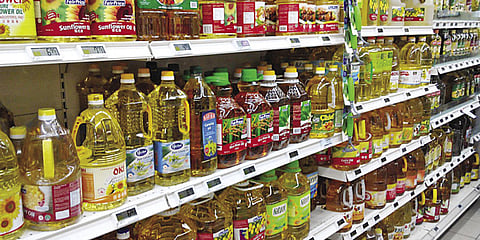At a time when poor households in the country have been financially hit because of loss of jobs due to the second wave of Covid-19, the 60 per cent-plus rise in prices of edible oil has come as a double whammy to them. In fact, edible oil prices in India have surged to the highest level in over a decade this month. The rise in retail price of edible oils – mustard, vanaspati, soya, palm, sunflower and groundnut – has forced the Modi government to sit up finally and take stock of the situation.
The Department of Food & Public Distribution held a meeting with all stakeholders recently to discuss ways to address the issue of ‘abnormal rise’ in prices. Sudhanshu Pandey, secretary, food, asked states and industry stakeholders to find a way to soften the prices. But that is easier said than done. One key reason that has triggered the price rise is the fact that domestic production and availability of oilseeds in India is way below the demand. A big volume of edible oil is imported each year. The change in International prices of edible oil impacts the domestic price of edible oil.
India is the highest importer of edible oil in the world and over 60 per cent of domestic needs are met through imports running into $10 billion (about Rs75,000 crore). As luck would have it, international crude edible oil rates have sharply increased this month, compared to the price a year ago. This includes crude palm oil and crude soybean oil. International prices are rising because of lower output in major producers Indonesia, Malaysia, Argentina, Ukraine and Russia.
Hit by drought, crop damage
India’s palm oil requirement is met from Indonesia and Malaysia. Palm oil covers about 40 per cent of the total edible oil consumption in India and 60 per cent of its imports. Palm oil supply has fallen because of labour shortage in Malaysia, the world’s second-largest producer in the world. Similarly, in Indonesia and Malaysia, the B30 and B20 bio-fuel mandates, which increase the amount of vegetable oils mixed in fuel, has increased local consumption, leaving a lower exportable surplus.
About 85 per cent of soybean oil in India is imported from Argentina and Brazil, while 90 per cent of sunflower oil is imported from Ukraine and Russia. Soybean oil prices are rising because of dry weather in Argentina, the largest exporter, and higher demand from major consumers India and China. Similarly, sunflower oil prices are up, because of drought-like conditions in Ukraine and Russia, the largest producers and exporters of the commodity.
Adding to the woes of the government and the consumer is the fact that domestic production of oilseeds has also fallen. Officials of the agriculture ministry point out that in OY2020 (oil year: November to October) the domestic production of soybean, groundnut, mustard, and cottonseed oil was hit by lower acreage and crop damage.
The good news is that prices are likely to fall in the second half of OY2021. The government expects a gradual drop in prices in second half of OY2021 as the global supply normalises. However, the prices will still remain higher as compared to OY2020.
And it may also be a temporary reprieve. India is facing a pincer attack at the WTO from exporting countries of agri-commodities like pulses and edible oils that are either suppliers to, or competitors, to India in the international market. The idea seemingly is to pressure India into continuing to be a major destination market for their supplies and not attain self-sufficiency.
In January, during India’s Trade Policy Review meeting, the US and the EU flagged certain trade-related issues including increase in import duties. They also raised questions about India’s agricultural support programmes such as the minimum support price for various crops. At the last WTO Committee on Agriculture meeting in March, member-countries questioned India on various issues including continued restrictions on pulses import, wheat stockpiling, short-term crop loans, export subsidies for skimmed milk powder and export ban on onions.
The latest attack is on India’s ambitious plan to step up domestic oilseeds output so as to reduce dependence on vegetable oil imports. WTO member-countries are questioning India mainly regarding incentives to oilseed growers to boost output. Indian officials point out that they have no business to question, so long as the incentives are well within the permissible limits. However, given that the WTO operates on consensus, India will have to find ways India can boost domestic oilseeds output even without direct financial incentives or monetary support to growers.

